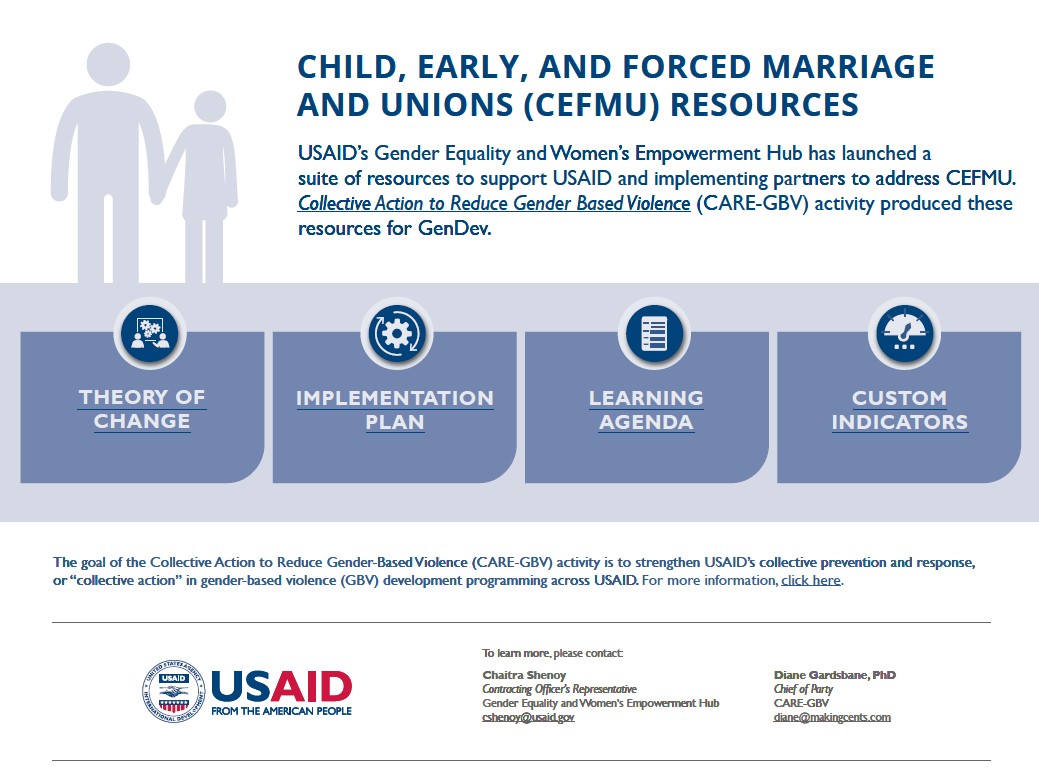Child, Early, and Forced Marriage and Unions (CEFMU) Resources
29.03.2022
ASIV

Working with our partners in Making Cents International on the implementation of the CARE-GBV Task Order under the Analytical Services IV IDIQ, DPI produced a set of complementary resources which provide a high-level roadmap for helping USAID and implementing partners work towards a joint vision: a world in which girls, boys, and children of diverse sexual orientations, gender identities, gender expressions, and sex characteristics are free from the risk of child, forced, and eraly marriage and unions (CEFMU), and are equitably valued and empowered, with safe and enabling environments that support them to realize their full potential.
The Theory of Change, which complements the Implementation Plan and the Learning Agenda, is designed to help guide USAID’s decision-making related to investments and action, as well as potential impacts and outcomes, and to provide common language and frameworks for those working across USAID on ending CEFMU. It is intended to guide USAID’s work in this area through 2030 to leverage its investments with governments, funders, implementing partners, and women- and girl-led organizations across the globe to strategically invest in gender-transformative, context-specific, evidence-based, sector-specific, and cross-sectoral programming and research. The three framework documents oultine a plan for USAID to contribute to answering the most pressing questions about CEFMU, meeting the needs of married adolescents, and ultimately ending the practice.
Child marriage (also called early marriage) is a formal or informal union where one or both parties are under the age of 18. Forced marriage is a marriage in which one or both spouses do not give full and free consent, regardless of age. Early unions are informal unions in which a girl or boy lives with a partner as if married before the age of 18. The acronyms “CEFM” — and increasingly, “CEFMU” — are often used to encompass all of these practices.
The three framework documents are futher complemented by a set of custom indicators that USAID and implementing partners can use to assess progress toward CEFMU results. These custom indicators are intended for use in combination with USAID standard indicators related to gender equality to assess progress toward intended CEFMU results across the socioecological framework.